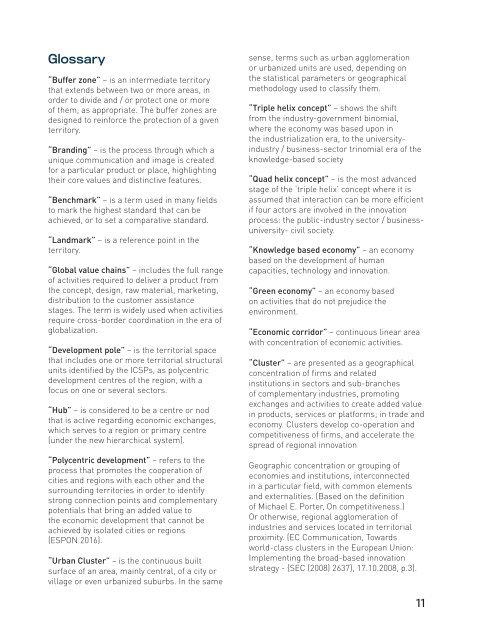Integrated Cross-Sectorial Plan of Tirana-Durres Area
The Albanian Government and the National Spatial Plan have identified the Tiranë-Durrës area, as one of the most important economic areas of the country, and of the Balkan region. To ensure a sustainable territorial and urban development of this area, the Ministry of Urban Development in cooperation with the National Territorial Planning Agency has taken the initiative to draft a Cross-sectoral Integrated Plan for the economic area Tiranë – Durrës. The metropolitan region under study includes territories administered by 5 municipalities: Tiranë, Durrës, Vorë, Shijak, Kamëz.
The Albanian Government and the National Spatial Plan have identified the Tiranë-Durrës area, as one of the most important economic areas of the country, and of the Balkan region. To ensure a sustainable territorial and urban development of this area, the Ministry of Urban Development in cooperation with the National Territorial Planning Agency has taken the initiative to draft a Cross-sectoral Integrated Plan for the economic area Tiranë – Durrës. The metropolitan region under study includes territories administered by 5 municipalities: Tiranë, Durrës, Vorë, Shijak, Kamëz.
Create successful ePaper yourself
Turn your PDF publications into a flip-book with our unique Google optimized e-Paper software.
Glossary<br />
“Buffer zone” – is an intermediate territory<br />
that extends between two or more areas, in<br />
order to divide and / or protect one or more<br />
<strong>of</strong> them, as appropriate. The buffer zones are<br />
designed to reinforce the protection <strong>of</strong> a given<br />
territory.<br />
“Branding” – is the process through which a<br />
unique communication and image is created<br />
for a particular product or place, highlighting<br />
their core values and distinctive features.<br />
“Benchmark” – is a term used in many fields<br />
to mark the highest standard that can be<br />
achieved, or to set a comparative standard.<br />
“Landmark” – is a reference point in the<br />
territory.<br />
“Global value chains” – includes the full range<br />
<strong>of</strong> activities required to deliver a product from<br />
the concept, design, raw material, marketing,<br />
distribution to the customer assistance<br />
stages. The term is widely used when activities<br />
require cross-border coordination in the era <strong>of</strong><br />
globalization.<br />
“Development pole” – is the territorial space<br />
that includes one or more territorial structural<br />
units identified by the ICSPs, as polycentric<br />
development centres <strong>of</strong> the region, with a<br />
focus on one or several sectors.<br />
“Hub” – is considered to be a centre or nod<br />
that is active regarding economic exchanges,<br />
which serves to a region or primary centre<br />
(under the new hierarchical system).<br />
“Polycentric development” – refers to the<br />
process that promotes the cooperation <strong>of</strong><br />
cities and regions with each other and the<br />
surrounding territories in order to identify<br />
strong connection points and complementary<br />
potentials that bring an added value to<br />
the economic development that cannot be<br />
achieved by isolated cities or regions<br />
(ESPON 2016).<br />
“Urban Cluster” – is the continuous built<br />
surface <strong>of</strong> an area, mainly central, <strong>of</strong> a city or<br />
village or even urbanized suburbs. In the same<br />
sense, terms such as urban agglomeration<br />
or urbanized units are used, depending on<br />
the statistical parameters or geographical<br />
methodology used to classify them.<br />
“Triple helix concept” – shows the shift<br />
from the industry-government binomial,<br />
where the economy was based upon in<br />
the industrialization era, to the universityindustry<br />
/ business-sector trinomial era <strong>of</strong> the<br />
knowledge-based society<br />
“Quad helix concept” – is the most advanced<br />
stage <strong>of</strong> the ‘triple helix’ concept where it is<br />
assumed that interaction can be more efficient<br />
if four actors are involved in the innovation<br />
process: the public-industry sector / businessuniversity-<br />
civil society.<br />
“Knowledge based economy” – an economy<br />
based on the development <strong>of</strong> human<br />
capacities, technology and innovation.<br />
“Green economy” – an economy based<br />
on activities that do not prejudice the<br />
environment.<br />
“Economic corridor” – continuous linear area<br />
with concentration <strong>of</strong> economic activities.<br />
“Cluster” – are presented as a geographical<br />
concentration <strong>of</strong> firms and related<br />
institutions in sectors and sub-branches<br />
<strong>of</strong> complementary industries, promoting<br />
exchanges and activities to create added value<br />
in products, services or platforms; in trade and<br />
economy. Clusters develop co-operation and<br />
competitiveness <strong>of</strong> firms, and accelerate the<br />
spread <strong>of</strong> regional innovation<br />
Geographic concentration or grouping <strong>of</strong><br />
economies and institutions, interconnected<br />
in a particular field, with common elements<br />
and externalities. (Based on the definition<br />
<strong>of</strong> Michael E. Porter, On competitiveness.)<br />
Or otherwise, regional agglomeration <strong>of</strong><br />
industries and services located in territorial<br />
proximity. (EC Communication, Towards<br />
world-class clusters in the European Union:<br />
Implementing the broad-based innovation<br />
strategy - {SEC (2008) 2637}, 17.10.2008, p.3).<br />
11
















